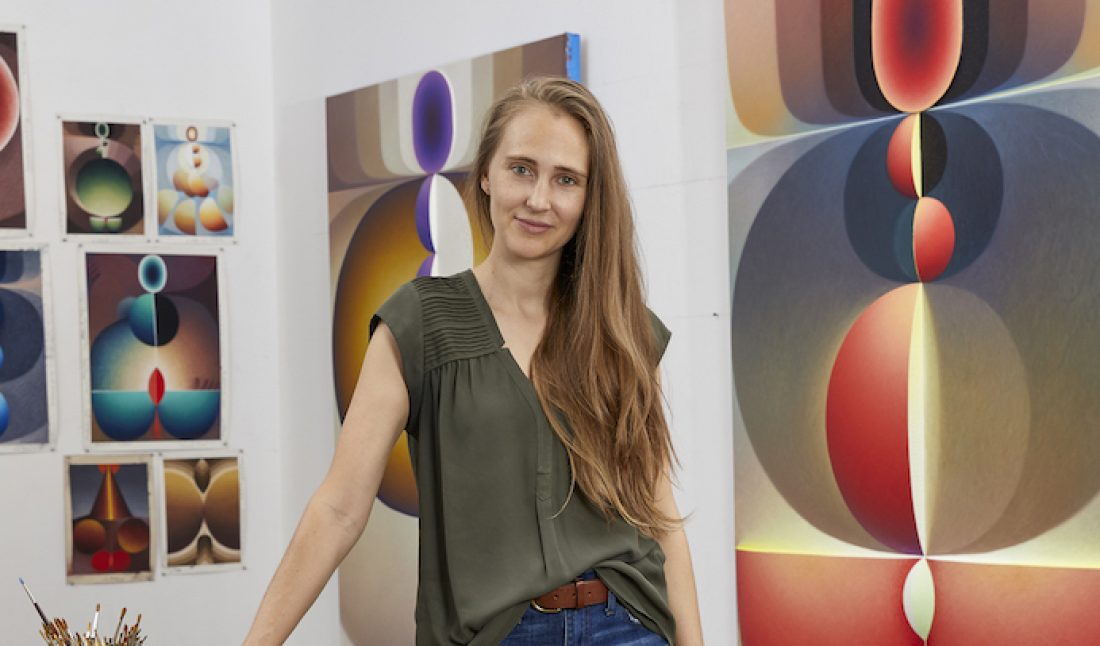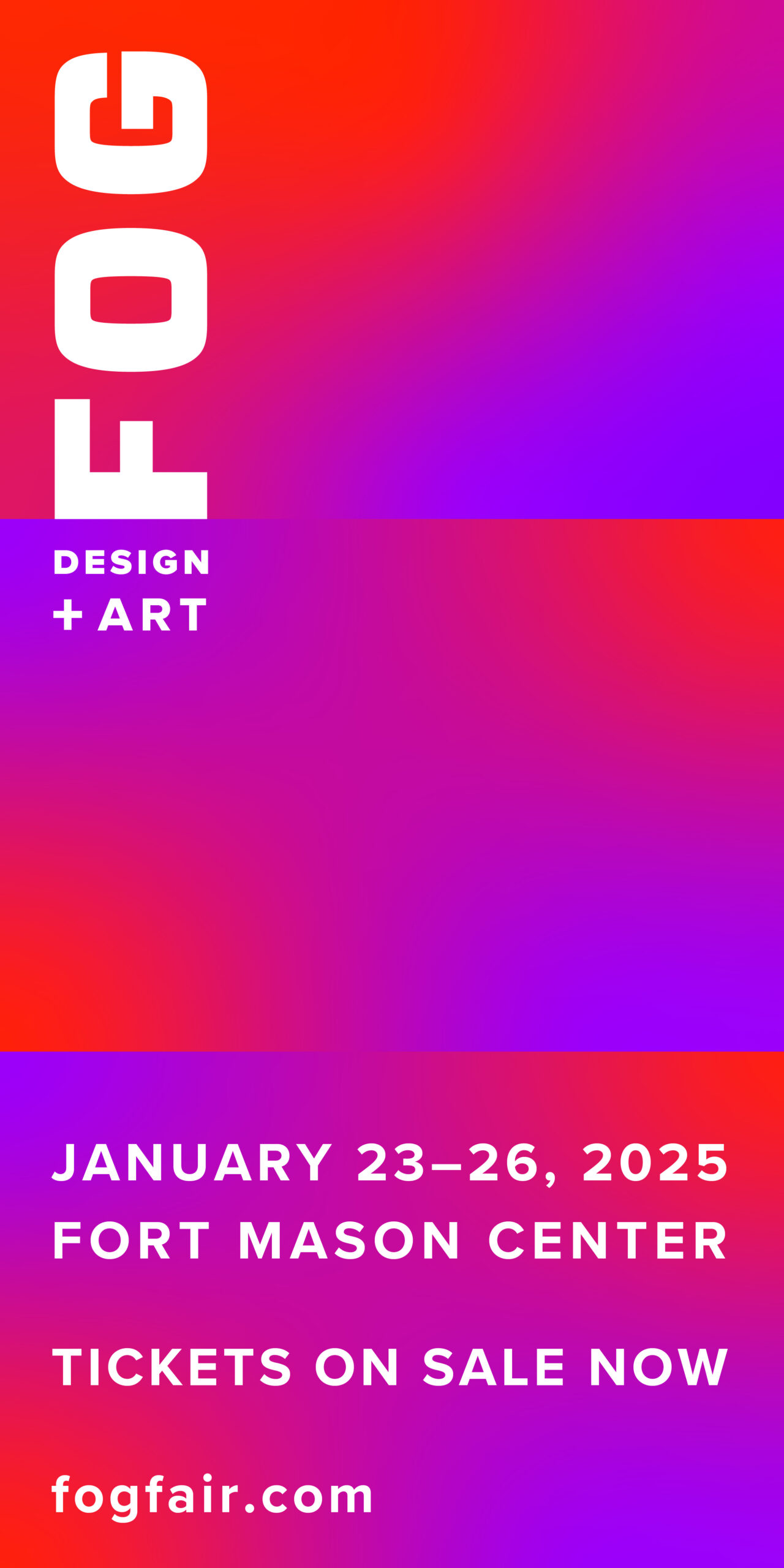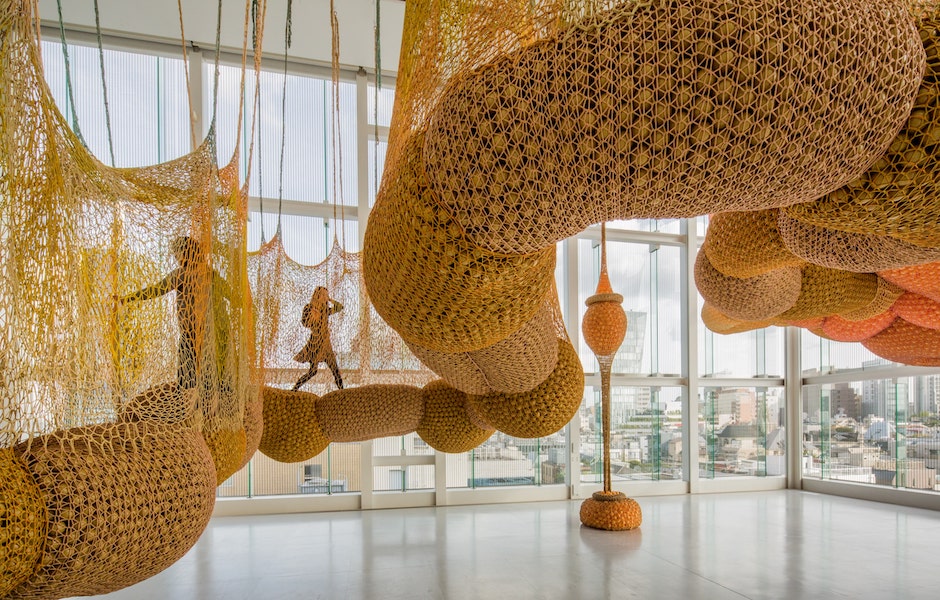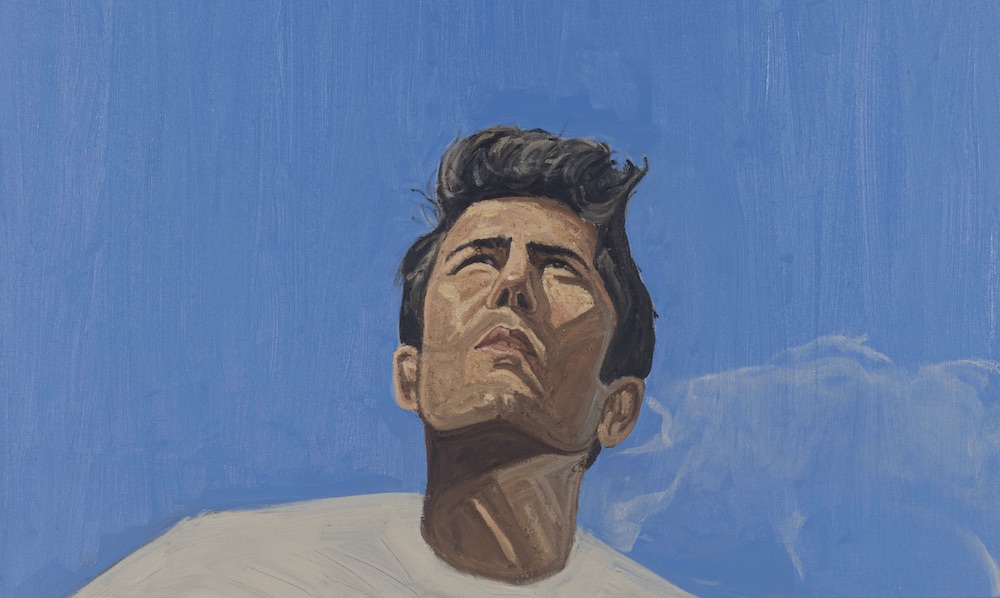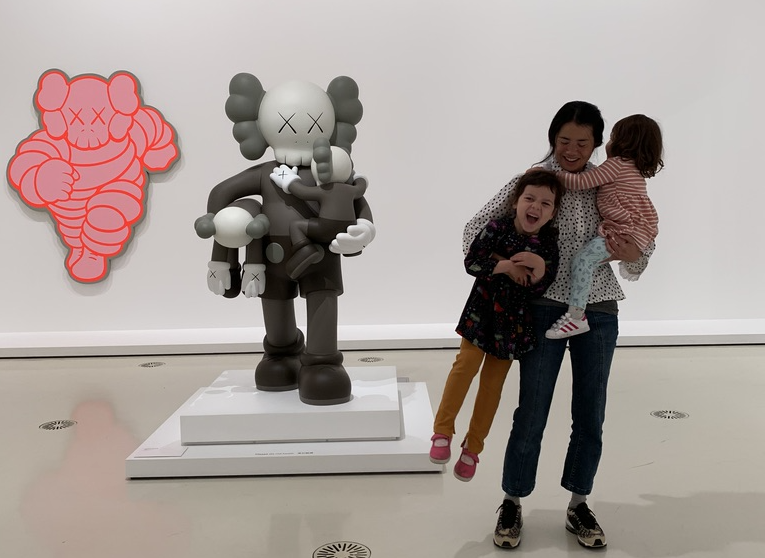Loie Hollowell’s online exhibition “Going Soft” at Pace closed earlier this week. The show of new work included striking representations of pregnancy, birth, and postpartum. The artist gave welcomed her second child in April, just at the beginning of lockdown. The fear and unknown of that time, and the experience of the body and mind’s postpartum journey, are captured in pastel drawings—a medium and scale chosen for its practicality during quarantine.
“Going Soft” is a stark contrast to Hollowell’s 2019 show, “Plumb Line.” While those paintings also explored the human form, they were comprised of clean lines, perfect shapes, sacred geometries, and symmetry. In this series, she’s loosened up, just as the body does in pregnancy and after. There are the soft rolls of squishy skin, like in Post-pregnant belly and boobs (June 17, 2020); the surprise spray of milk from engorged breasts, like in Trickle Down (March 24, 2020); the surprising feeling of an empty womb, like in Postpartum belly void (May 27, 2020); and the uncomfortable reality of recovery, like in Deep tear (March 30, 2020).
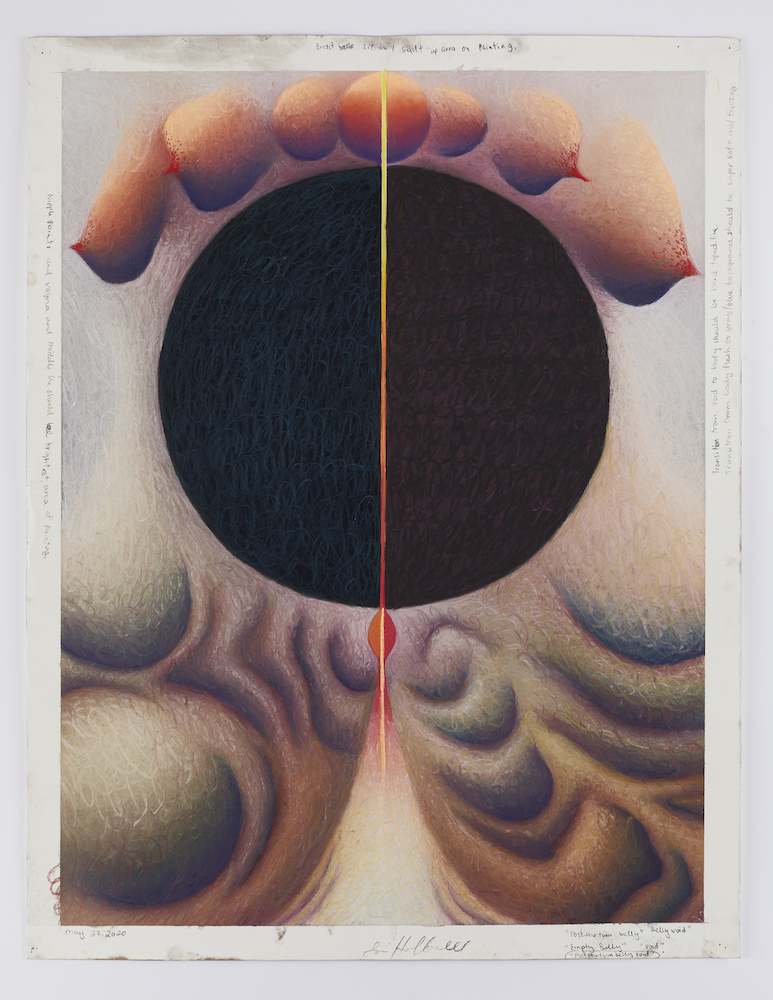 Loie Hollowell, “Postpartum belly void,” May 27, 2020, soft pastel and graphite on paper, 26 × 20 inches,
©Loie Hollowell,
courtesy Pace Gallery.
Loie Hollowell, “Postpartum belly void,” May 27, 2020, soft pastel and graphite on paper, 26 × 20 inches,
©Loie Hollowell,
courtesy Pace Gallery.
For the latest in our Art Mamas series, Hollowell shares how becoming a mother has changed her practice, what it’s like to give birth in a pandemic, and why she’s focused on being present in this moment.
WHITEWALL: When did you become a mother?
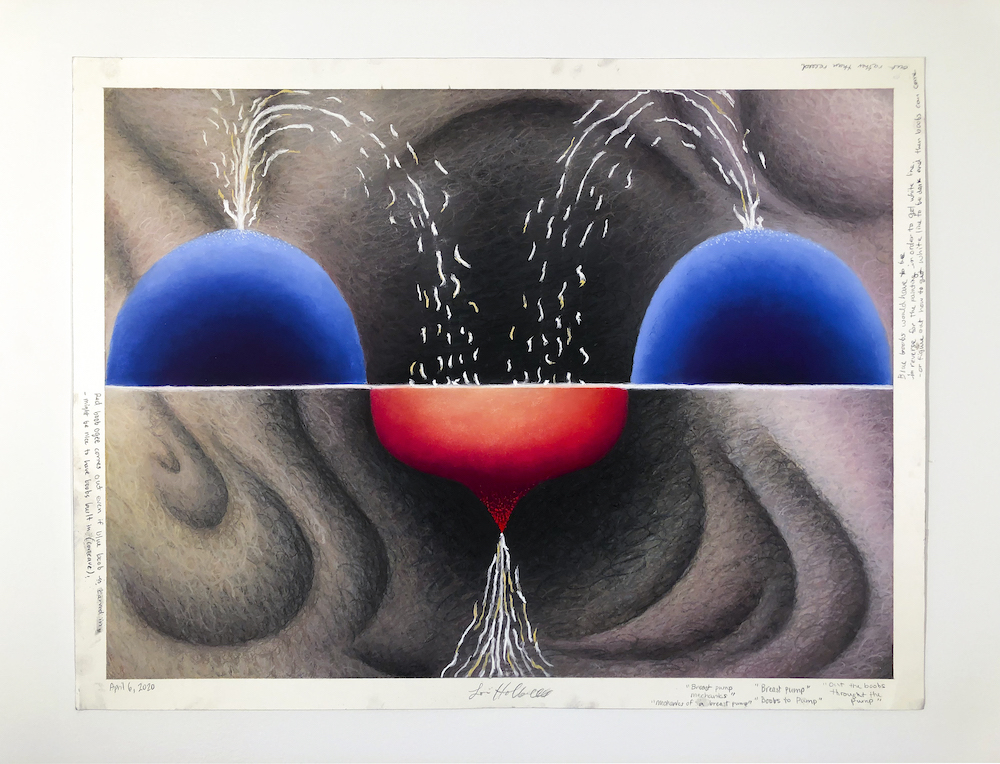 Loie Hollowell, “Mechanics of a breast pump,” April 6, 2020, soft pastel and graphite on paper, 20 × 26 inches,
©Loie Hollowell,
courtesy Pace Gallery.
Loie Hollowell, “Mechanics of a breast pump,” April 6, 2020, soft pastel and graphite on paper, 20 × 26 inches,
©Loie Hollowell,
courtesy Pace Gallery.
LOIE HOLLOWELL: I had my first child, Linden in 2018 when I was thirty-five years old. More recently, I had my second child, Juniper this year in April. My oldest is about to turn two this December!
WW: Congratulations! With your first, were you able to take any leave?
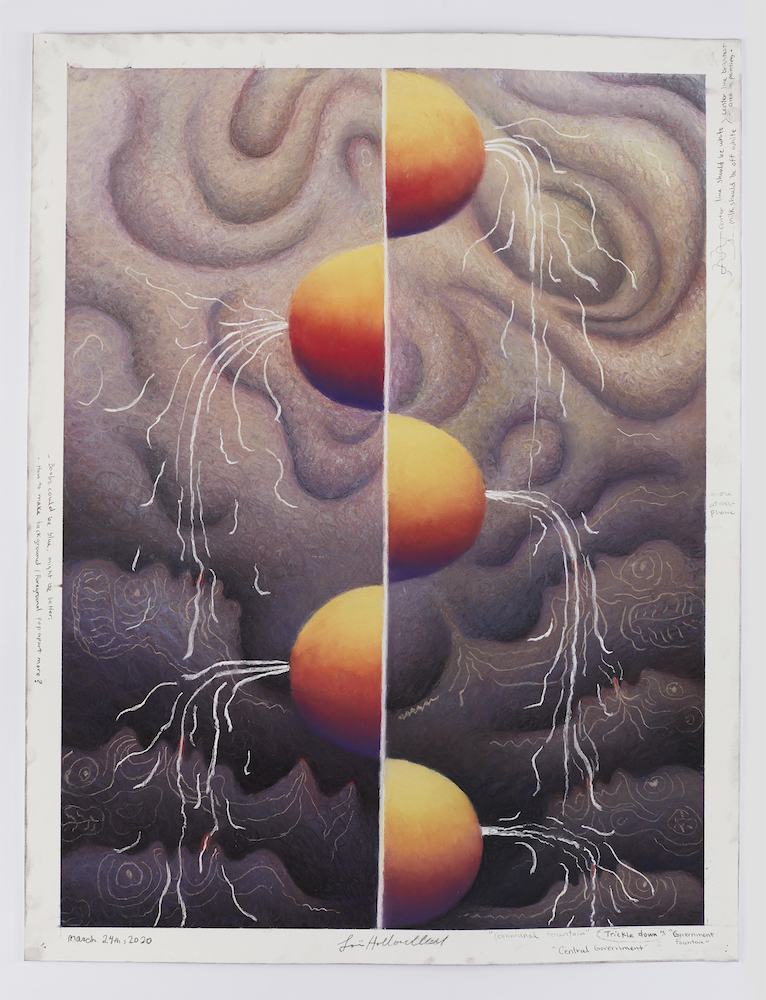 Loie Hollowell, “Trickle Down,” March 24, 2020, soft pastel and graphite on paper, 26 × 20 inches,
©Loie Hollowell,
courtesy Pace Gallery.
Loie Hollowell, “Trickle Down,” March 24, 2020, soft pastel and graphite on paper, 26 × 20 inches,
©Loie Hollowell,
courtesy Pace Gallery.
LH: Being an artist, I never really wanted to take a break. It’s such a big part of myself and my identity so even when I couldn’t be in the studio, I was continuously drawing in my sketchbook. I came back to the studio full time about a month after giving birth.
WW: How was your transition back?
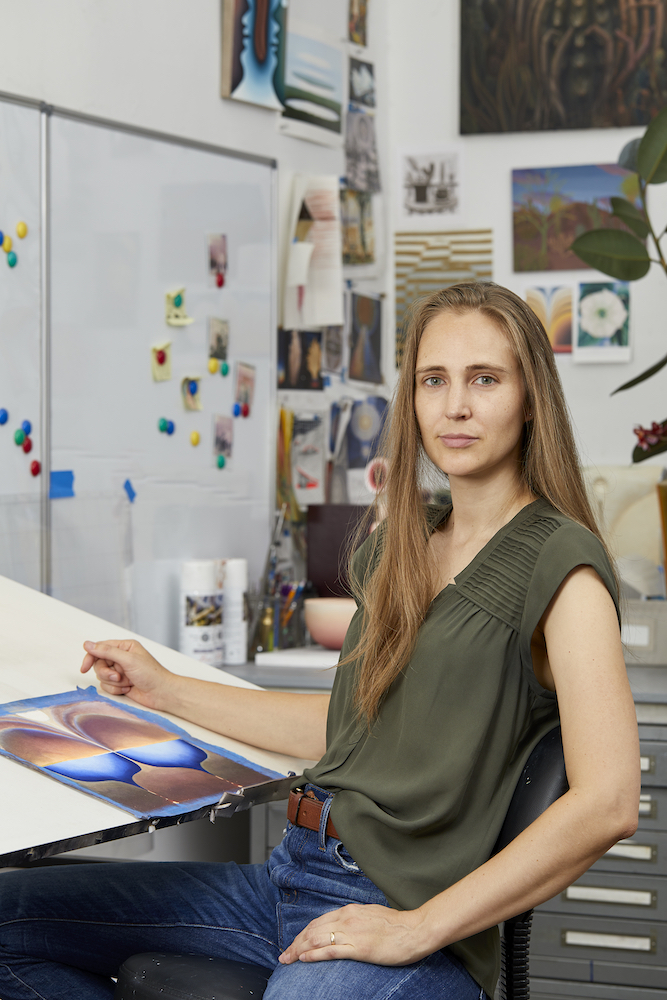 Loie Hollowell, photo by Melissa Goodwin.
Loie Hollowell, photo by Melissa Goodwin.
LH: The transition back into the studio differed quite a bit between my two pregnancies. When I gave birth to Linden in 2018, I was back in the studio right away, but because Juniper was born in the middle of a pandemic, I had to shift my schedule and work a lot from home, going back part-time at first. It’s been quite an adjustment, to say the least.
WW: I can imagine! What a wild time to be pregnant, give birth, and bring a baby home. What has the second postpartum experience been like for you?
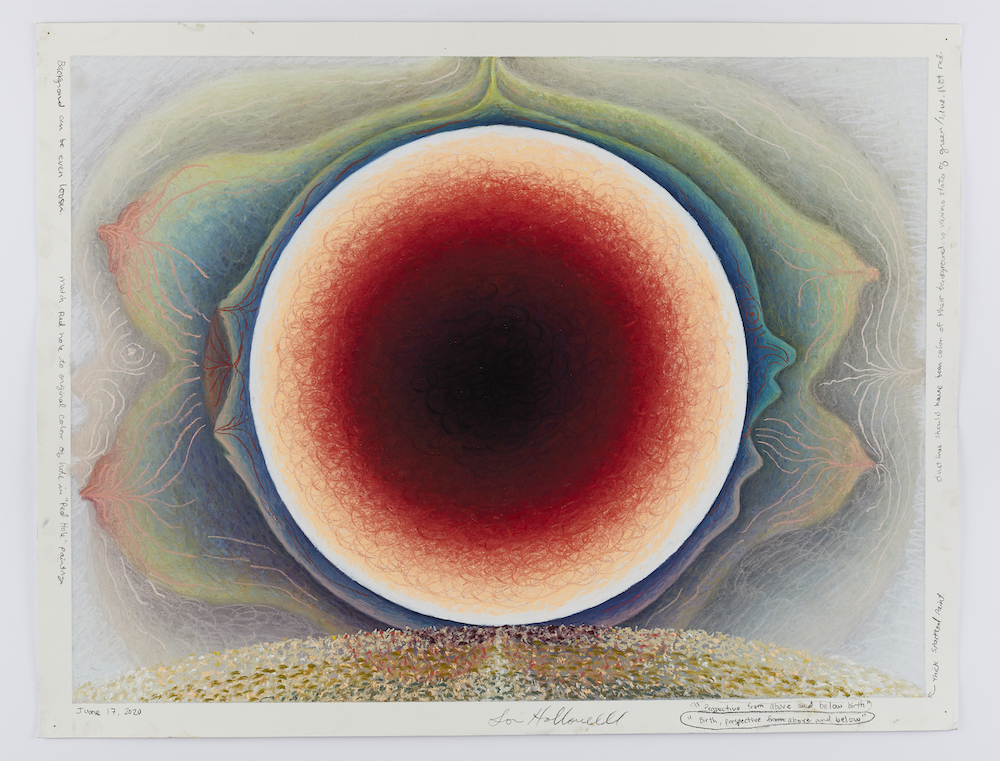 Loie Hollowell, “Birth, perspective from above and below,” June 5, 2020, soft pastel and graphite on paper, 20 × 26 inches,
©Loie Hollowell,
courtesy Pace Gallery.
Loie Hollowell, “Birth, perspective from above and below,” June 5, 2020, soft pastel and graphite on paper, 20 × 26 inches,
©Loie Hollowell,
courtesy Pace Gallery.
LH: This postpartum experience has been much easier than my first. I was more prepared because I found a therapist and psychiatrist after my first birth. Although things are no less chaotic or challenging, I have the resources and proper medication to really help me through this postpartum journey. Things are much more seamless this time around.
WW: That’s incredible. Mental health postpartum is so vital. I wish I had thought to put resources like that in place for myself.
I’m curious, did becoming a mother, change how you viewed your artistic practice?
LH: Becoming a mother has changed everything for me, including my practice. Because time management is a very real thing for me now, I’ve found that I’ve had to be more focused than before, working smarter to make work as efficiently as possible. I have a fairly strict studio schedule so I don’t have as much time to sit with the work. It’s helped me focus and work more deliberately.
WW: What was the starting point for “Going Soft”?
LH: “Going Soft” came about during the COVID-19 pandemic. At the beginning of lockdown in the spring, I was so close to giving birth to my second child, I had to adapt my studio practice to a room in my house. I couldn’t exactly paint six-foot canvases in oil at home so I decided to concentrate on drawings. Because I was so close to my due date, and because the general anxiety and stress I felt about the world at large was added to the fear of giving birth once again, my work started to take a different turn. My figures became more blobby, more organic, and my colors darkened and took on more earthy, bodily tones. The drawings created for “Going Soft” served as chapters to my ever-changing mental state leading up to and following the birth of my second child. Each drawing helped me sort through the chaotic energy, both externally and internally and enabled me to experiment more loosely with my style and process.
WW: How did the work evolve from your first pregnancy to your second?
LH: My work has changed quite a bit over the last couple of years. For this most recent series of drawings, I loosened up quite a bit and decided to work more intuitively and improvisationally, allowing myself to explore new compositions and themes in my work. Because I had to work at home for so long, that also had a big impact on my practice. I was unable to have continuous long creative stints, with my youngest constantly in need of attention and the general chaos of the household around me. I had to embrace it and work sporadically, which resulted in spontaneous moments and changes in my work.
WW: How do you experience art with your children?
LH: My kids are still too young to have a really meaningful experience with art. I’ve taken my one-year-old to museums but to be honest, he couldn’t care less. Sometimes though, I take him to the studio and he pretends to paint along with me, smooshing a dry brush into the wall like he’s creating a masterpiece, it’s adorable.
WW: Too cute!
What is the biggest misconception about motherhood?
LH: Might not be the biggest misconception but I feel like everyone told me that breastfeeding is this big, beautiful important thing you have with your baby and there’s so much pleasure in it and to be honest, it’s not been that way for me. It’s hard and it’s painful. My first baby Linden refused to latch so I had to pump for six months. Now, with Juniper, she’s latched but it’s incredibly difficult and I wish someone had told me that. It’s not easy nor comfortable. I’m not sure if it’s the case for everyone, but for myself, it’s been one of the biggest challenges.
WW: How do you interact with your community of mothers?
LH: Right now, during COVID-19, I’m definitely not seeing that many other people, so when I do get to hang out with fellow moms, it’s usually for walks around the neighborhood or local park, socially distanced, of course. Many of the parents in my social circle are also artists and we’ve been friends for years before any of us had kids, so most of the time, we talk about art and our lives as much as we talk about being parents. Because my kids aren’t yet in school, I haven’t entered a huge community of parents quite yet, but I’m sure that will change once they’re enrolled in preschool.
WW: What is something a mother has shared with you that’s really resonated?
LH: One piece of advice that I’ve heard from countless parents of older children is to cherish the moments of them being young. It’s a bit cliché, but they do grow up so fast and it’s easy to let this time slip by. I’m trying to be more present in these moments and remember that.






